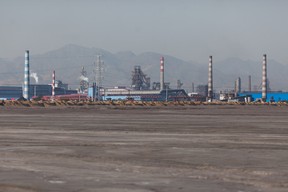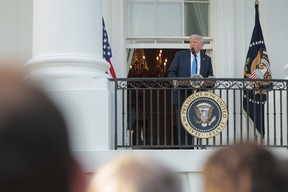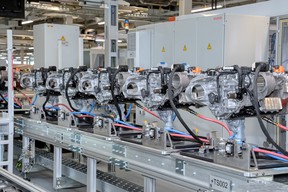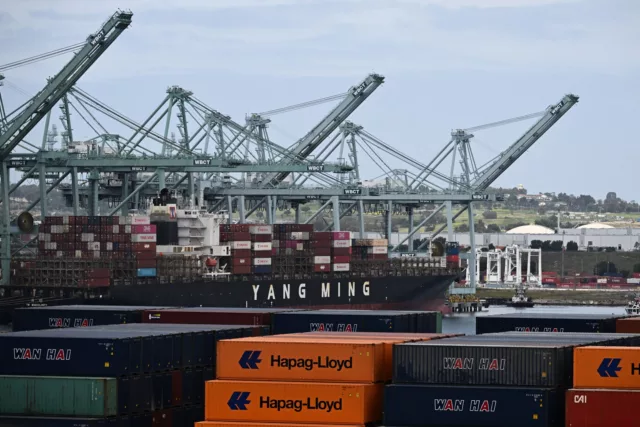Will Trump, as always, “chicken out,” or will cars, especially electric vehicles, be in short supply once again?

Article content
Those that fail to learn from history are doomed to repeat it
—Winston Churchill, by way of George Santayana
Article content
Article content
Reuters reported last week that auto executives are sounding the alarm over Chinese-government restrictions on the export of rare-earth metals, saying the policy “could halt [vehicle] production.” No one is sure exactly when Western automakers’ stockpile of these metals might be fully depleted, but Automotive News is reporting “several European parts plants and production lines” have shut down because of shortages; Ford has already had to idle an Explorer plant in Chicago because of a dearth of rare earths; and India’s automakers might run out by the end of this month.
Advertisement 2
Story continues below
Article content
Meanwhile, the New York Times quotes Michael Dunne, an automotive consultant specializing in China, as saying “China could bring America’s automotive assembly plants to a standstill.” If all these strident headlines prove true — and, more importantly, China continues to play tariff hardball with the United States — this could mean a supply-chain disruption that would make the pandemic seem like a summer sneeze.
So, what are these “rare-earth” elements? Other than having mostly unpronounceable names and the fact they come from China, I, like most of you, knew little about samarium and yttrium before China’s export restrictions hit the headlines last week. So Motor Mouth did some digging, and here’s pretty much everything you need to know about a bunch of minerals which, as I’ll show, pretty much nobody cared about until The Donald decided to play “Liberation Day” with Xi Jinping.
The very first thing you need to know is that—
Article content
They’re not really all that rare

Officially, there are 17 rare-earth minerals, the most important of which include neodymium, samarium, lanthanum, and cerium. Considering that each is a tongue-twister you’ve probably never heard before, it’s hardly surprising they’re “rare,” right?
Well, actually, they’re not. With few exceptions, they are actually not all that uncommon. They are, for instance, more plentiful than copper or gold. What grants them their “rarefied” status is not so much their scarcity, but the difficulty in mining them.
Wonder what your car is worth?
Get your instant cash offer in under 2 minutes.
Advertisement 3
Story continues below
Article content
And, by “difficult,” I mean “ugly.” Unlike more easily mined metals like iron, silver, and even gold, which are most often mined from high-concentration ores, “rare earths” are quite abundant, but found in low concentrations, often requiring environmentally-disastrous mining techniques on a grand scale. Indeed, one of the main reasons — actually, the main reason — China owns the vast majority of the rare-earths business is because its extremely lax environmental standards allow the destruction of all before them. By all tellings, digging for rare earths is some of the filthiest mining in the world. Ditto for the processing plants. As Forbes says, “the mining and refinement of these metals is environmentally destructive, something that until recently China cared less about than do the developed nations of the West.”
Read More
—And they weren’t always so “rare”
Before the advent of modern sensors, catalytic converters, batteries, and high-power electric motors, there wasn’t all that much demand for rare earths in the auto industry. So, when China decided to start pillaging Mongolia’s countryside in the late ‘90s in the search of these elusive minerals, no one much minded. Western countries instead welcomed China’s charge into the relatively low-profit, high-toxicity domain of rare earths.
Advertisement 4
Story continues below
Article content
Indeed, one of those tiny little factoids that somehow always seem to go missing in Trump’s ALL-CAPS denigrations of China’s malfeasance is that, in the 1980s, the United States was, in fact, the world leader in the production of rare-earth metals. But the permanent magnets we now so covet for EV motors were such a low-priced commodity that America was only too happy to ship production to the Far East. So much so that China now monopolizes almost 70% of rare-earth mining and, according to the International Energy Agency, also controls an incredible 92% of the refining of heavy rare earths. Meanwhile, America, once dominant in the industry, has but one (sporadically) working mine remaining, which, until recently, had to send all its ore to China for processing.
It’s also worth noting that, at least according to New York Times, the U.S. has known for nigh on 15 years — ever since Beijing imposed a similar ban on Japan — that it could someday be at the mercy of China as a result of its rare-earth monopoly. According to Bloomberg, “the U.S. national security establishment has known about its dependency on China for years yet hasn’t come up with a solution at scale.”

Nor is the Trump White House any less guilty of passing the buck than previous administrations, Bloomberg noting that critical minerals were already “flagged as the next battleground in U.S.-China ties at the height of Trump’s first trade war.” Now, according to the Times, China produces almost all of the world’s “high-performance” rare-earth magnets, an “Achilles’ heel, which China continuously exploits,” said Nazak Nikakhtar, former assistant secretary of commerce overseeing export controls during Trump’s (again) first term.
Advertisement 5
Story continues below
Article content
Why rare-earths are so important
There is no single use-case for all rare-earth elements. Europium is used in computer screens; cerium seems to be the go-to abrasive in the automotive-windshield industry; and some, like lanthanum, find their way into the nickel-metal-hydride batteries still used in a few hybrids. Other automotive uses include steel, sensors, and LEDs. Indeed, gather enough reports together — the more the merrier, since no one single source seems to list all the automotive uses for rare earths — and it becomes pretty apparent that little of what we produce in auto plants is possible without rare earths from China.
In the 1980s, the United States was the world leader in the production of rare-earth metals, but they were such a low-priced commodity that America was only too happy to ship production to the Far East
Despite their manifold uses, however, the real money-maker is electric motors. Although this is a gross over-simplification, there are basically two types of powertrains used in electric vehicles today: permanent-magnet; and induction motors.
Induction motors use copper or aluminum “windings” in their rotors to generate the necessary magnetic field, and are therefore unaffected by geopolitics. Unfortunately, induction motors are not nearly as efficient as those that use permanent magnets, and, while some automakers have tried to wean themselves off rare earths — especially for cheaper, lower-performance EVs — the increasing demand for efficient and powerful electric cars is creating exponential growth in the demand for the stuff instead.

And not only are permanent magnets used to make cars go, they’re also used to make them stop (via the motors used in anti-lock braking systems) and more comfortable (because all those 18-way adjustable seats don’t just move themselves, you know). Indeed, by far the most interesting part of this story to me — because, even for an engineer, magnets in motors is pretty boring stuff — is how the very same short-sightedness being applied to our trade talks today is exactly how we gave China the rare-earth industry 20 years ago. I bet a whole bunch of automakers are wishing they had studied history as assiduously as Winston Churchill.
Advertisement 6
Story continues below
Article content
To TACO or not to TACO?
In case you hadn’t yet heard, Trump’s propensity for acronymized put-downs has been turned against him recently. What he has always seen as brilliant negotiating — the insistent ALL-CAPS boasting of fantastical demands followed by typically pitiful results as he walks them back — has resulted in Financial Times analyst Robert Armstrong coining the abbreviation “TACO,” as in “Trumps Always Chickens Out.” It seems to have gotten under his skin — a recent “That’s the nastiest question” retort to a reporter’s query about the term was not returned with his usual good humour. Some are even wondering if the president’s defensiveness could affect trade policy, The Independent recently positing that “Trump’s TACO codename will make him so mad he’ll enforce tariffs just to make a point.”
Unfortunately for automakers, this is no time for Trumpian self-absorption. The North American auto industry needs what China has; there isn’t, for the foreseeable future at least, a credible alternative; and America not only sold out its rare-earths industry, but has studiously ignored calls that repercussions were inevitable. Even today, with automakers all screaming “Help!” the U.S. has but one refining plant (in Fort Worth, Texas). Unfortunately, its entire annual production — 1,000 tons of magnets — is not equivalent to even a single day’s production in China. Automakers are no doubt hoping the next set of a trade negotiations with China are more “macho” than “TACO.”
Sign up for our newsletter Blind-Spot Monitor and follow our social channels on X, Tiktok and LinkedIn to stay up to date on the latest automotive news, reviews, car culture, and vehicle shopping advice.









Comments